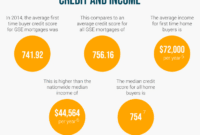Credit Card Insurance: Is It Worth the Extra Cost? – Credit Card Insurance Is It Worth the Extra Cost? This question has lingered in the minds of many consumers navigating the complexities of credit cards and their associated benefits. Credit card insurance promises peace of mind, offering coverage for unexpected events that could impact your financial health. With various types of insurance available, it’s essential to understand not just what these policies cover but also whether the cost is justified in today’s financial landscape.
As we delve into this topic, we’ll explore the different facets of credit card insurance, including its potential benefits, drawbacks, and real-life implications. By examining both the financial rationale and customer experiences, we aim to provide an insightful overview to help you make an informed decision.
In today’s fast-paced world, where technology plays a crucial role in shaping our daily lives, the importance of effective communication cannot be overstated. Whether it’s in our personal relationships, professional environments, or even in casual interactions, mastering the art of communication can lead to better understanding, stronger connections, and more fruitful collaborations. In this article, we will explore the various dimensions of communication, including its types, principles, barriers, and the impact of technology on how we convey messages.To begin with, let’s take a closer look at the different types of communication.
Broadly speaking, communication can be categorized into verbal and non-verbal forms. Verbal communication encompasses both spoken and written language. It involves the use of words to express ideas, thoughts, and emotions. Whether it’s a casual conversation with a friend or a formal presentation at work, verbal communication is central to our daily interactions. On the other hand, non-verbal communication includes body language, facial expressions, gestures, and eye contact.
These non-verbal cues often convey more meaning than words themselves. For instance, a smile can communicate warmth and friendliness, while crossed arms might indicate defensiveness or discomfort.Understanding these different types of communication is vital, especially when we consider the principles that underpin effective communication. Clarity, conciseness, and coherence are fundamental principles that should guide our interactions. Clarity ensures that our message is easily understood, while conciseness keeps our communication brief and to the point.
Coherence, on the other hand, refers to the logical flow of ideas that makes our message easier to follow. By adhering to these principles, we can significantly enhance our communication skills.Despite our best efforts to communicate effectively, various barriers can impede the process. These barriers can be physical, psychological, or cultural in nature. Physical barriers refer to environmental factors that disrupt communication, such as noise or distance.
Psychological barriers, on the other hand, include personal biases, emotions, and mental distractions that affect how we perceive and convey information. Cultural barriers arise when individuals from different cultural backgrounds misinterpret messages due to differing norms, values, or language. Being aware of these barriers is crucial, as it allows us to adapt our communication strategies accordingly and foster better understanding.In recent years, the advent of technology has transformed the way we communicate.
The rise of social media platforms, instant messaging, and video conferencing has made communication more accessible and instantaneous. However, this digital revolution also comes with its own set of challenges. For instance, the lack of non-verbal cues in text-based communication can lead to misunderstandings and misinterpretations. Furthermore, the prevalence of online communication has raised concerns about the decline of face-to-face interactions, which are essential for building strong relationships.
Striking a balance between digital and personal communication is key to maintaining healthy connections in our increasingly connected world.Emotional intelligence also plays a significant role in effective communication. It refers to the ability to recognize, understand, and manage our own emotions, as well as the emotions of others. Developing emotional intelligence can enhance our communication skills by enabling us to respond to others with empathy and compassion.
For example, being aware of someone’s emotional state can help us tailor our message in a way that resonates with them. This thoughtful approach can lead to more meaningful exchanges and stronger interpersonal relationships.Active listening is another critical component of effective communication. It involves fully concentrating on the speaker, understanding their message, responding thoughtfully, and retaining the information shared. By practicing active listening, we demonstrate respect for the speaker and create an environment conducive to open dialogue.

This not only enhances mutual understanding but also fosters trust and collaboration.In addition to these aspects, the context in which communication occurs plays a significant role in shaping the message. Factors such as the setting, audience, and purpose of communication can influence how our message is perceived. For instance, a casual chat with a friend differs greatly from a formal business meeting.
Recognizing the context allows us to adapt our language, tone, and delivery style to suit the situation, ultimately leading to more successful interactions.Moreover, feedback is an essential element of effective communication. It serves as a tool for gauging the impact of our message and understanding how it was received. Constructive feedback encourages open communication and provides an opportunity for growth and improvement.
Whether we are giving or receiving feedback, approaching it with an open mind and a willingness to learn can significantly enhance our communication skills.In conclusion, communication is an intricate and multifaceted process that requires careful consideration and practice. By understanding the types of communication, embracing key principles, recognizing barriers, and leveraging technology, we can improve our interactions. Additionally, honing emotional intelligence, practicing active listening, and being mindful of context and feedback can further enhance our communication skills.
As we navigate through our personal and professional lives, the ability to communicate effectively will remain an invaluable asset, paving the way for stronger relationships and more successful endeavors.



